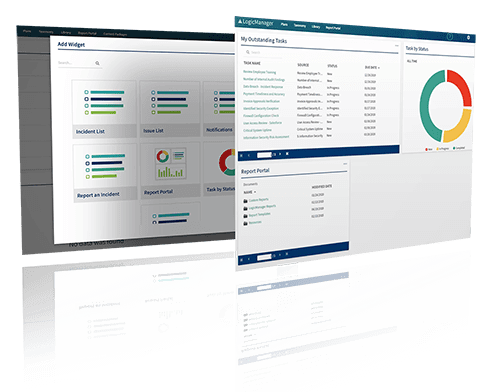Business Continuity vs. Disaster Recovery: What Is The Difference?
Bonus Material: Free BCP Checklist
Table of Contents
Introduction
When comparing business continuity vs disaster recovery, it can be hard to understand the differences between the two. This guide will explain their key differentiators.
When you think of a superhero, the first image that comes to mind is probably someone wearing a mask and cape, flying around a dystopian city and battling evil. Superheroes possess unique abilities beyond the average human, allowing them to protect those around them and help the world become a better place. These comic book and movie characters, while it’s true that they’re ultimately fictional characters, are all – to some extent – based in reality. Humans may not be able to fly or shoot spider webs out of their hands, but there are people in the real world who embody the same morally righteous and benevolent qualities of a superhero and dedicate their lives to defending the greater good.
Here at LogicManager, we believe that risk managers are the superheroes of their organizations. When calamity strikes, they’re the ones swooping in to get the business back up and running as quickly as possible; they don’t have the option to shy away from disaster.
Forward-thinking professionals focus on business continuity planning (BCP) and disaster recovery (DR) to serve as roadmaps to navigate their way out of difficult circumstances and ensure that recovery can happen faster.
This guide will explain the key differentiators when comparing business continuity vs disaster recovery. It’ll also delve into options for implementing business solutions so that you’re equipped with action items for improving your organization’s business processes.
What is Business Continuity?: Overview
We should think of business continuity as the first line of defense against any challenge that threatens the core functionalities of an organization’s business operations.
Planning for business continuity means taking the necessary steps to ensure that your business can continue to operate uninterrupted despite disaster. It also aims to reduce recovery time, or the time it takes to get things up and running as usual again.
Unforeseen Events
An unforeseen event is exactly what it sounds like: an event that you did not see coming. It’s a common term used amongst insurance agents and lawyers because when these events occur, people turn to them for financial help; by nature, the event was unforeseen, so many don’t have enough cash to cover the resulting damage upfront. It’s important to actively invest time and energy into preparing for any potentially negative event before it happens so that if or when it does, you have a plan in place and the necessary resources to return to business as usual.
Examples of Unforeseen Events
Historically, unforeseen events include things like:
- Natural disasters
- Winning the lottery
- Receiving a life-threatening diagnosis
- Getting in an accident
- A threat to national security, such as a terrorist attack
- Collapse of infrastructure
- And perhaps the most timely example of all, a pandemic (see our complete guide covering BCP for Covid 19).
The fact that there are historical examples of these events means that they are not completely unforeseen, but rather predictable when you truly take a risk-based approach to business continuity. As you can tell, business continuity planning is critical when managing your business.
Unforeseen events that pose a direct threat to business continuity include:
- The sudden unavailability of a key vendor-provided service
- A regional power outage
- Abandonment in leadership
- Data protection issues
- Supply chain issues
- Privacy policy issues
- Getting sued
- An industry strike
- Pest infestation
Ideally, a business continuity plan provides things like access to critical data backup, a safe place for employees to work, instructions for connecting to offsite systems, servers, applications, and anything else that can help prevent an organization from going offline and suffering revenue loss.
What is Disaster Recovery?: Overview
Disaster recovery refers to getting those systems, servers, and applications up and running following – you guessed it – disaster. “Disaster” includes but is not limited to all of the threats listed above. From a data security standpoint, there are additional threats that may not trigger a BCP but instead trigger a disaster recovery plan (DRP), such as:
- A cyber or data protection breach
- Server, network, or system failure
- Device failure
- Lack of employee training
Maintaining a comprehensive DRP is essential to functioning properly after a catastrophic event. The main focus of disaster recovery planning should be minimizing the time it takes to recover. The quicker you can recover, the quicker your organization can begin functioning normally again following disaster. An example of a control included in your DRP may be having a solid data backup in the event of a breach to recover business data.
That way, with disaster recovery planning, the backup systems will enable your business to get up and running faster.
Business Continuity vs. Disaster Recovery: What Is The Difference?
The main difference between business continuity and disaster recovery is the timing of the plan. For example, in the case of business continuity planning, you would create a plan before or during an event and try to focus on keeping operations as normal as possible. However, disaster recovery planning completely focuses on the response to a specific event with the ultimate aim to create disaster recovery plans which get operations back to normal.
Unlike a BCP, a disaster recovery plan focuses on restoring IT infrastructure and accessing copies of data stored offsite at a data center without focusing too much on getting the business as a whole back up and running during the crisis itself. We can think of a DRP as a subset of the BCP. Ultimately, it is equally important for all employees at an organization to know exactly how to react if either risk management plan is put in place and the effect that this may have on business operations.
Companies may choose to focus on either crafting a BCP or DRP, subscribing to one mentality over the other. To be completely prepared, it’s essential to have both a comprehensive BCP and DRP in place to ensure complete coverage from the unthinkable.
Product Solutions
Without the right cloud-based software, constructing your business continuity plan can be extremely difficult and time-consuming. Some of the challenges you may face include:
- Difficulty accessing important information due to tracking via traditional spreadsheets or word documents that make shared access and updates a challenge on business operations
- Exerting an unnecessary amount of effort identifying and engaging the critical business units in a disaster recovery plan because you’re lacking an integrated solution
- An inability to identify gaps in your BCP/ DRP because of unseen factors or information and siloed processes
- Following disaster, lacking a dedicated area to document and respond to incidents for centralized trending
LogicManager Software For Business Continuity & Disaster Recovery
L
- Easily access, review and update all of your BC/DR information, like business processes and related assets, in one centralized framework
- Link risks and controls directly to the business continuity plan that they relate to using our taxonomy technology
- Manage your responsibilities and track the status of your projects with easily accessible to-do lists to ensure that you have a solid plan in place
- Evaluate the criticality of each business process with pre-built, intuitive business impact analysis (BIA) templates
- Improve coordination with automated tasks, alerts, and reminders
- Easily track disaster events when they occur, identify the gaps in your business continuity plans and determine follow-up improvements to your procedures with our intuitive incident templates
- Ensure the BCP or DRP you have in place is operational and effective with automated testing to prepare in the event of a disaster so that emergency management is in place
- Prove BC/DR compliance to auditors and effectiveness to senior management with highly configurable reports for internal and external stakeholders and compliance checklists
- And much more
In Summary: Has Your Company Thought About Business Continuity Planning & Disaster Recovery Planning?
As a risk manager, you need to know which business functions are the most critical so that you can plan recovery better in your business. You need to identify the resources employees use to keep crucial processes functioning, and you need to have business continuity and disaster recovery steps outlined to get those critical business processes and resources back online should havoc come to visit.
However, superheroes are only as good as their sidekicks. With LogicManager’s cloud-based business continuity planning software as your sidekick, you’ll be equipped with a BCP toolkit suited to your needs, so that you can apply best practices to your business and ultimately take on any challenges that come your way.

